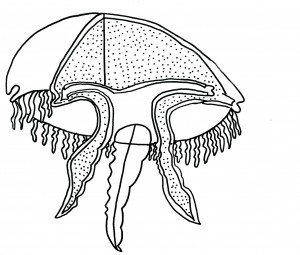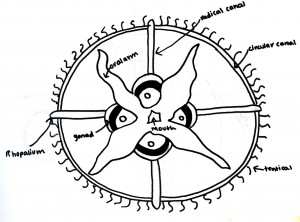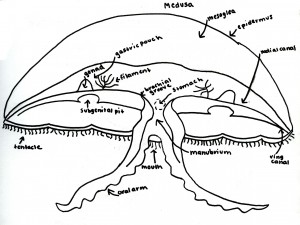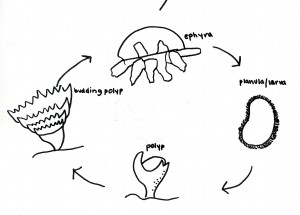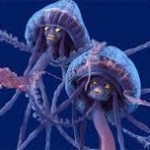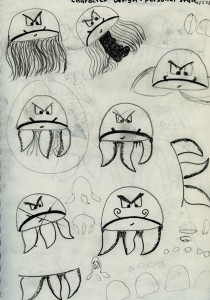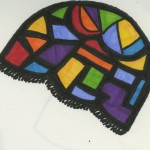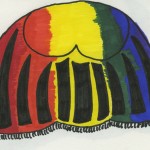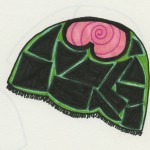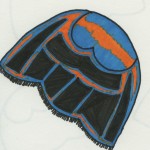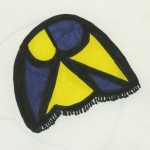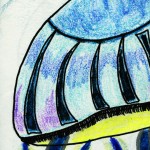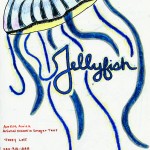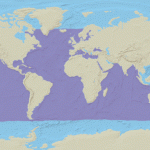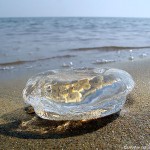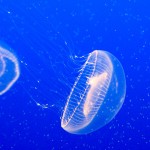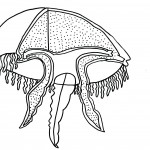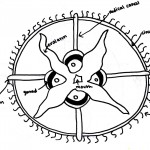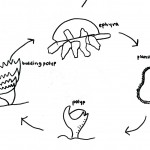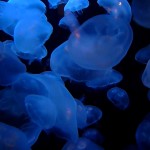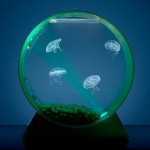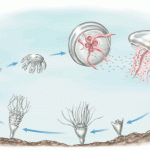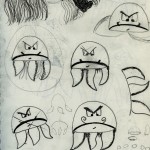Aurelia Aurita Observed April-May by Jessy Leff at Point Defiance Zoo
Kingdom-Animalia
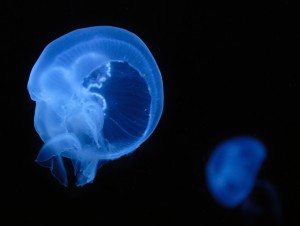
Medusa. Digital image. Beyond the Pale. Blogspot.com. Web. 04 June 2012. <http://tomclarkblog.blogspot.com/2010/07/medusa.html>.
Phylum- Cnidaria
Class-Scyphozoa
Order- Semaeostomeae
Family- Ulmaridae
Genus- Aurelia
Species- Aurelia Aurita
Country of Orgin- Eastern Atlantic coast of Northern Europe and the western Atlantic coast of North America in New England and Eastern Canada
Introduction- My decision to choose the jellyfish as my observed animal was based on my desire to further my knowledge of this unique creature. I wanted to choose an animal that I was familiar with and was easily accessible for observation and research. My familiarity of the jellyfish was of typical nature, I knew they stung, and I was pretty sure there was no actual jelly involved in their structures. The mysterious quality of the jellyfish also lured me to expand my experiences with them. The jellyfish is a beautiful animal that continues to amaze and intrigue me even though my research has concluded.
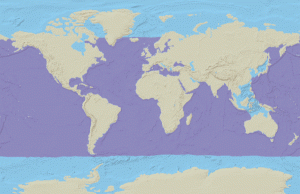
Moon Jellyfish Habitat Map Zoom Image. Digital image. Marine Wildlife Encyclopedia. Oceana. Web. 31 May 2012. <http://oceana.org/en/explore/marine-wildlife/moon-jellyfish>.
Origination The origin of the moon jellyfish is unknown. The species is so prevalent in oceans around the world, it is near impossible to tell where the species originated. Fossils of jellyfish have been found in Utah and are over 500 million years old. The image to the left is a map depicting the areas where the moon jellyfish can be found in purple.
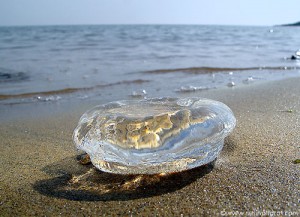
Nasiri, Mansour. Jellyfish. Digital image. Flickr.com. Web. 04 June 2012. <http://www.flickr.com/photos/nasiriphotos/179224193/>.
Environment Jellyfish are found in mostly warm and some tropical waters although they can live in cold water as well. They are most commonly found on shores, and they are found in large numbers. They prefer to live in water with low salt levels.

Moon Jellyfish. Digital image. Animal Unique. Blogspot.com. Web. 04 June 2012. <http://animal-unique.blogspot.com/2011/09/moon-jellyfish.html>.
Genus (Aurelia) There are at least 13 different species of jellyfish in this genus. This genus of jellyfish is the most studied group of “gelatinous zooplankton”. The most studied of the 13 species is the moon jellyfish. Aurelia change throughout generations. This means that at certain points in their life that are asexual and at other times they have male and female sex organs.
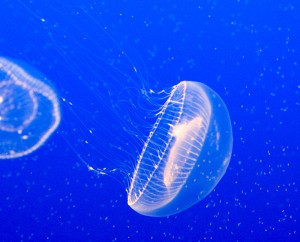
Ambrose, Kristy. Jellyfish Reproduction. Digital image. Gestation Period for Jellyfish. Ehow.com. Web. 04 June 2012. <http://www.ehow.com/info_8789226_gestation-period-jellyfish.html>.
Reproduction Moon jellyfish reproduction takes place in the spring and summer. Eggs develop in the gonads in the pockets of the oral arms. There are male and female moon jellyfish making their reproduction sexual.
Physical Extremities There are several parts that make up the body of the moon jellyfish. The first is the medusa, which is the umbrella shape membrane that the tentacles are attached to. There are four gonads that are underneath the stomach (which is covered by the medusa) There is also a nerve net that helps with swimming and feeding. Adult jellyfish can be up to 40 cm!
This is an image of a jellyfish with a portion of it’s medusa removed thus revealing the interior membranes.
This drawing represents a cross section of the underside of the jellyfish. The four gonads are shown along with the oral arm- all identifying traits of the moon jellyfish.
This picture depicts all of the external and internal extremities of the moon jellyfish.
Life Cycle
Cultural History
California- jellyfish have been known to cause blackouts! Jellyfish use water to create electricity so when there are too many of them together it can jam up cooling system locations! Some people rely on cooling system locations as they’re source of electricity!
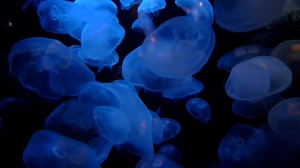
Moon Jellyfish Swimming. Digital image. Moon Jellyfish. Wikipedia.com. Web. 04 June 2012. <www.google.com/imgres?q=moon+jellyfish&num=10&um=1&hl=en&biw=
Asia- Many Asian cultures actually eat jellyfish! In fact, it is considered a special treat. Because it is such a popular and special dish many places actually harvest them so they are always on hand. Jellyfish can be eaten raw or can be cooked, both having very different textures.

The Other Side of the World. Digital image. The Other Side of the World. Blogspot.com. Web. 05 June 2012. <http://runfloweratown.blogspot.com/2011_07_01_archive.html>.
Jellyfish as Pets- Jellyfish can be placed in large tanks and can be observed in people’s homes! The tanks must be set up with special machinery so there are currents in the tanks. Currents help with jellyfish movements. If there is no current in the water, jellyfish can get stuck in the corners of he tank.
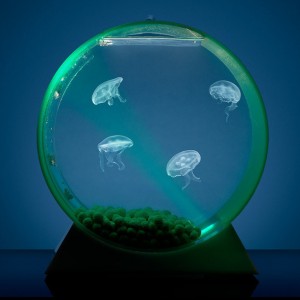
Desktop Jellyfish TankWhite. Digital image. Desktop Jellyfish Tank. Fab.com. Web. 04 June 2012. <http://fab.com/inspiration/desktop-jellyfish-tank>.
Jellyfish on TV-
Character Page- jellyfish sketches for animation
Pure Animal Animation
Cartoon Animal Animation
Reflective Writing
Pure Animal-
The jellyfish floats throughout the tank. Up and down. Up and down. Left to right. Left to Right. The jellyfish is translucent, but shines blue in the light of the tank. The jellyfish now floats solely on the top right of the tank. Its tentacles sway back and forth in a slow gesture. The jellyfish tilts its medusa towards the right and begins a slow motion. It moves towards the right with its tentacles following it slowly. The jellyfish moves in the same motions as the others surrounding it. The current is forcing them to all move the same direction. The jellyfish begins moving right to left, right to left. It continues with the same action until time runs out.
The Abyss-
You dance through the water, your float in the motion of the water. Beauty and mysticism surround you. You are a beautiful mystery, controlling the water and its currents. You dance to the rhythm of the water communicating with your jellyfish brethren. You swift movements are precise and domineering. You control the sea and the tank. Up and down. Up and down. Left to right, left to right. This is a map, premeditated movement. You go purposely, your every motion planned to a tee.
Myself-
While observing the Jellyfish I kept creating identities for them. I kept trying to understand what they were doing and why they were doing it. I imagine the jellyfish were communicating and purposefully moving in the same direction, when in reality I have no idea. I envision that the rainbow coloring of them is not just from the light of the tank but instead part of their being, part of their identity. Their constantly changing colors are part of their mystery. Intentional and purposeful.
- Medusa. Digital image. Beyond the Pale. Blogspot.com. Web. 04 June 2012. .
- Moon Jellyfish Habitat Map Zoom Image. Digital image. Marine Wildlife Encyclopedia. Oceana. Web. 31 May 2012. .
- Nasiri, Mansour. Jellyfish. Digital image. Flickr.com. Web. 04 June 2012. .
- Ambrose, Kristy. Jellyfish Reproduction. Digital image. Gestation Period for Jellyfish. Ehow.com. Web. 04 June 2012. .
- By Jessy Leff
- by Jessy Leff
- by Jessy Leff
- Moon Jellyfish Swimming. Digital image. Moon Jellyfish. Wikipedia.com. Web. 04 June 2012. .
- The Other Side of the World. Digital image. The Other Side of the World. Blogspot.com. Web. 05 June 2012. .
- Desktop Jellyfish TankWhite. Digital image. Desktop Jellyfish Tank. Fab.com. Web. 04 June 2012. .
- Moon Jellyfish. Digital image. Animal Unique. Blogspot.com. Web. 04 June 2012. .
- Life Cycle of the Moon Jellyfish. Digital image. Life Cycle of the Moon Jellyfish. Www.scientific-art.com. Web. 05 June 2012. .
- by Jessy Leff


